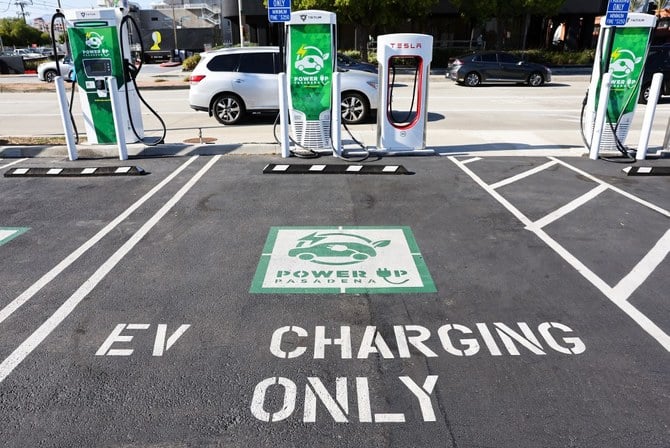
hat should we do? The world is rapidly approaching 1.5C of warming above pre-industrial levels − the target limit of the Paris agreement − and is on track for 3C unless we take action. So what is the best action to take?
In 2018, the Intergovernmental Panel on Climate Change (IPCC) predicted that to have a good chance of limiting heating to 1.5C, we should reach net-zero CO2 emissions by around 2050, give or take five years. In fact, for any stable climate we’ll need to reach net-zero emissions at some point in our future.
But net zero is the destination, not the journey. It doesn’t tell us how to get there. The idea of “net-zero emissions” exists because “zero emissions” is too hard − we will use some fossil fuels for the foreseeable future, so we must also suck them out of the air using so-called negative-emissions technologies. The best-known negative-emission technology? A tree.
There are also more ancient kinds. Earlier this month, a study explored the possibility of sprinkling a mineral compound over the world’s fields to draw carbon dioxide from the air above. So far, so science fiction. But the compound is just volcanic basalt rock ground into dust, and the chemical reaction is weathering, which is a process as old as the Earth.
When carbon dioxide in the air dissolves into raindrops, it reacts with rocks when it falls, and the leftover compounds are washed into the oceans. These compounds are used to build shells and corals, and eventually bright-white limestone like the cliffs of Dover. Slowly, inevitably, this draws CO2 from the air and locks it up for hundreds of thousands of years.
Enhanced weathering is the name for accelerating this process to human timescales, by grinding the rocks into dust. The process would even improve the soil, potentially helping to reduce food insecurity in countries that adopted it. The idea is not new, and basalt is not the only suitable rock. A non-profit organisation called Project Vesta, for example, hopes to spread the mineral olivine over beaches to mimic the green-sand beaches found in Hawaii and the Galápagos Islands. But as Phil Holden, co-author of the basalt study (and my colleague), points out: “A key aspect of this paper is the framing of enhanced rock weathering technology in realistic and achievable assumptions, which includes the use of realistic and achievable energy and climate projections.”
Is basalt the magic fairy dust to take us to net zero? The team, led by David Beerling, predicted it could remove up to 2bn tonnes of CO2 from the air each year, using mostly waste dust from mining. Strangely, this number − a 5.5% decrease in emissions − is the same as the predicted impacts of the worldwide Covid-19 lockdown this year. As time goes by and our emissions drop, it would become a bigger proportion, potentially saving 12% of the remaining carbon budget for staying below the 2C of heating agreed at Paris. That’s a respectable chunk: but it can’t be the only answer.
Other ways to remove carbon dioxide appear, at first glance, to be more effective. The most well known use the Earth’s biological processes, growing trees and plants and locking away the carbon in their leaves and wood. The IPCC noted last year that some estimates for planting widespread forests reached the equivalent of 10bn tonnes of CO2 a year by 2050. Using crops as fuels and capturing the CO2 could reach 11bn tonnes, and burying charcoal in soil up to 6bn tonnes.
But these numbers need to be interpreted with great caution: not only are they extremely uncertain but each maximum represents an incredible, impractical amount of land.
Weathering doesn’t use up vast tracts of land but it has its own challenges. Much of the research has been theoretical, so more experiments are needed. It will require public support, and this may depend on perceptions, such as how “natural” it is. Understanding how weathering mimics the Earth’s own CO2 regulation system might help with this.
Some also fear that extracting CO2 from the air might reduce the incentive to decrease our emissions. But weathering is not a cheap, easy fix. Beerling’s team estimated it would cost $80-180 (£64-£143) to extract each tonne of CO2. It’s cheaper not to emit the stuff in the first place: costing around $20-100 to avoid a tonne of CO2 by replacing coal with low-carbon energy.
Given all these pros and cons, what should we do? The answer is: all of the above. We can’t choose CO2 extraction as an alternative to reducing emissions, because we don’t know any way to do it that is quick, effective and cheap enough, while also using low energy, water and land.
Negative-emissions technologies cannot be the single solution to climate change: they are necessary, but not sufficient. They only offer a way to scrub the last few stubborn tonnes of CO2 from the air that we can’t avoid emitting. One prediction cited in the basalt study suggested this might be only 2bn tonnes a year − perhaps small enough for weathering alone to deal with − because of the transition to low-carbon technology and new climate policies.
But, as the IPCC said in 2018, we cannot escape the fact that limiting global warming to 1.5C would require “rapid and far-reaching transitions” in energy, land, urban infrastructure and industry. The point is that there will be no silver bullet for climate change. No easy choice for the best action to take, no get-out-of-jail-free card. We have left it too late for that: we need to do (almost) everything, and fast.
• Dr Tamsin Edwards is a senior lecturer in physical geography at King’s College London












